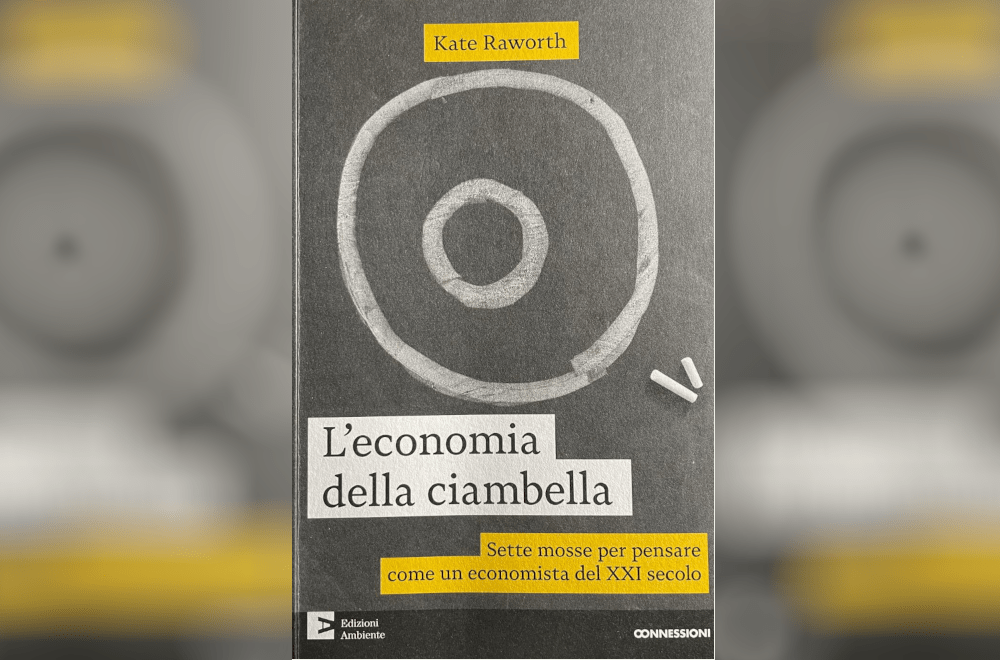“The economy of the donut” By Kate Raworth proposes a new economic model that balances social well -being and ecological limits. In this review, we explore the key ideas of the book, the criticisms of the traditional economy and the solutions for a more sustainable future
Published for the first time in 2017, “The economy of the donut” Of Kate RaworthBritish economist, proposes in a new economic vision capable of responding to the challenges of the 21st century. The model of the “donut” It represents an alternative to traditional economic theories, based on infinite growth and aims to guarantee human well -being within the ecological limits of the planet.
But, Raworth wonders, “Okay, who is really willing to concretize these ideas? Who is ready to go beyond the debate, going from theory to practice? “.
A new metaphor for the economy
The central element of the book is the concept of donut, a figure made up of two concentric circles. The internal circle represents the minimum necessary for a dignified life, including fundamental needs such as food, water, health, education and social rights. The external circle marks the planetary boundaries that must not be overcome to avoid environmental collapse. The intermediate area, the “donut” It is real, it is the space in which humanity can thrive in balance.
Raworth criticizes the dominant economic paradigm, based on PIL It is unlimited growth, considering it unsuitable for a world with finished resources. Instead, it proposes a regenerative and distribution economy, in which prosperity is not measured only in quantitative terms, but takes into account social and environmental well -being.
Criticism of traditional economic thought
A strong point of the book is the author’s ability to deconstruct the dogmas of the classical economy. Raworth highlights how many dominant concepts – from the rationality of “homo economicus” To the law of demand and supply – are obsolete theoretical constructions, which do not reflect the complexity of the real world. The economy, according to the author, should be reformulated to face global challenges such as climate change, inequalities and environmental degradation.
“Welcome to the generous city”
Kate Raworth writes in this chapter: “Factories and industries can be regenerative for project and the same goes for urban landscapes. Janine Benyus is giving concreteness to her vision and is creating what she calls “generous city”: human settlements that fit into the living world. First of all, he observes the original ecosystem of a city – forests, swamp or savannas around – and records the rate with which solar energy intercepts, seizes carbon, storage rain water, fertilizes the ground, purifies the air and more . These measurements are then adopted as a standard for the new city, challenging and inspiring architects and planners to create buildings and landscapes that are “as generous as the wild lands outside the cities”.
Concrete proposals for the future
Raworth does not just criticize, but also proposes practical solutions. Among these, the idea of a regenerative economy stands out, in which the concept of growth is replaced by a circular model, capable of reusing resources without destroying the ecosystem. In addition, the author promotes a more fair distribution of wealth through tax tools, work policies and new properties approaches.
The book stands out for its accessibility: Raworth uses clear language and effective images, making it also understandable complex concepts. Through numerous examples, it demonstrates how the model of the donut can be applied to several stairs, from cities to national governments.
Rethink our relationship with growth, environment and collective well -being
“The economy of the donut” It is an illuminating text that offers an innovative perspective on the global economy. With an incisive criticism of traditional paradigms and an optimistic vision of the future, Kate Raworth provides concrete tools to rethink our relationship with growth, the environment and collective well -being. An essential book for anyone who wants to understand the economic challenges of our time and contribute to a positive change.
“The economy of the donut” di kate raworth
Seven moves to think as an Economist from the Delxxi century
Ambnient Editions
Connections

